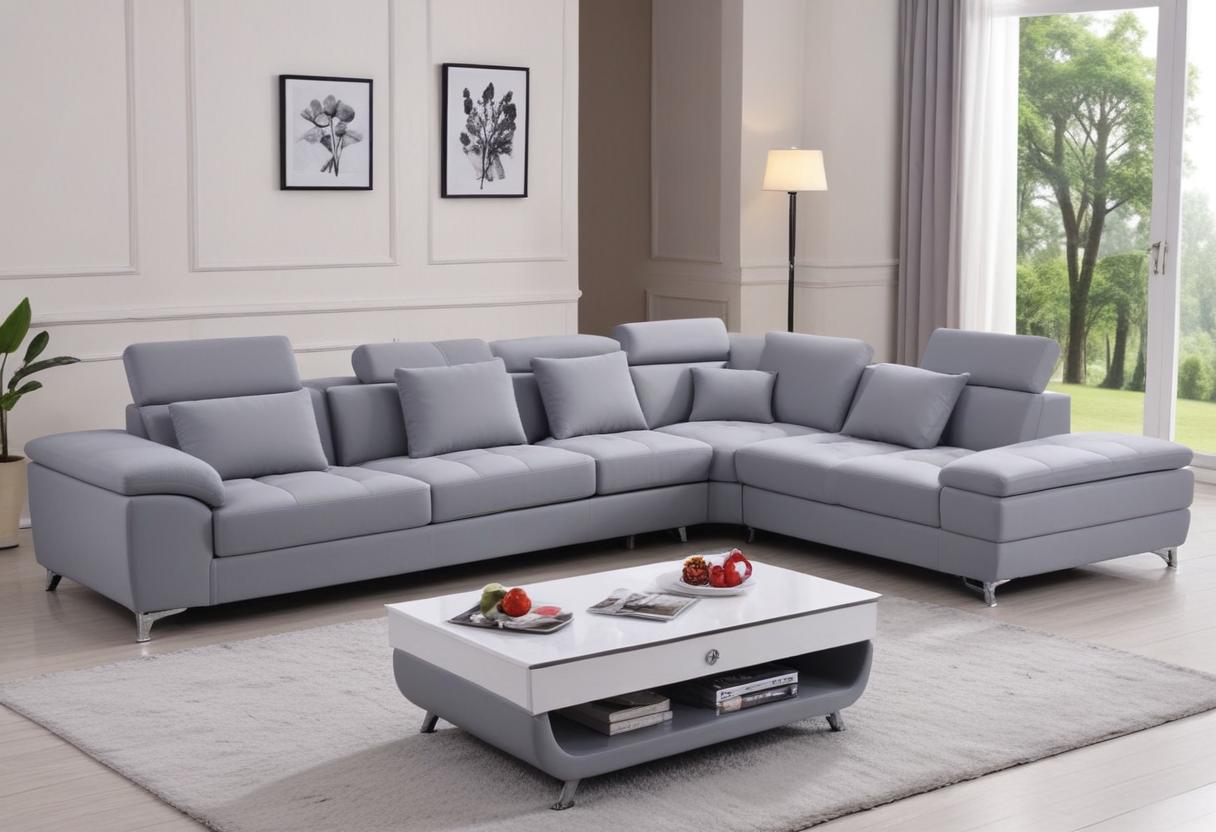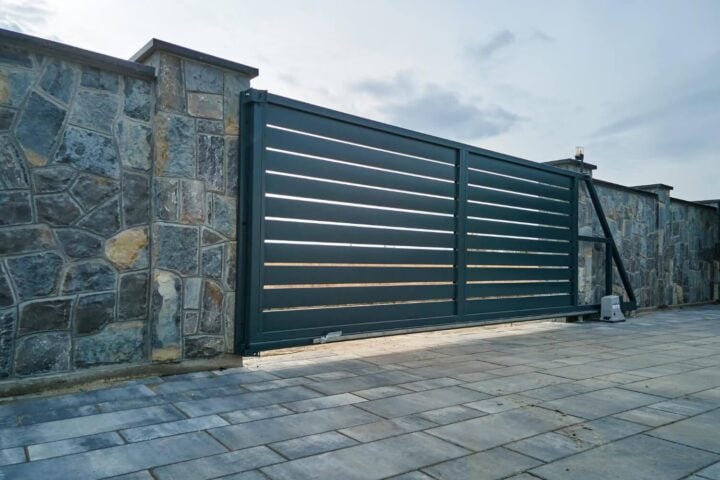An L-shape sofa is a wonderful addition to any living room, combining comfort with a stylish design that maximizes seating space. Its unique shape can complement a wide variety of interior designs, making it a versatile piece of furniture. However, like any investment, your L shape sofa requires proper care to maintain its appearance and longevity. Here are some comprehensive tips to help you keep your L-shape sofa looking new for years to come.
1. Regular Cleaning
Vacuuming: Dust and dirt can accumulate on your sofa over time, making it look dull and worn. Regular vacuuming helps to remove these particles before they settle deeply into the fabric. Use a soft brush attachment to avoid damaging the material.
Spot Cleaning: Accidents happen, and when they do, it’s crucial to address spills immediately. Use a clean cloth to blot the spill (never rub), and then apply a mild detergent mixed with water to clean the area. Always test the solution on an inconspicuous area first to ensure it doesn’t discolor the fabric.
Deep Cleaning: At least once or twice a year, give your sofa a thorough cleaning. This might involve using a steam cleaner or hiring professional upholstery cleaners. Deep cleaning helps to remove embedded dirt and rejuvenates the fabric.
2. Protecting the Fabric
Fabric Protector: Applying a fabric protector spray can create a barrier against stains and spills. These products are available for different types of fabrics, so make sure to choose one that’s appropriate for your sofa’s material.
Slipcovers and Throws: Using slipcovers or throws can provide an extra layer of protection while also giving you the option to change the look of your sofa. They can be easily removed and washed, keeping your sofa looking fresh.
Sunlight and Heat Exposure: Prolonged exposure to direct sunlight can cause your sofa’s fabric to fade. Position your sofa away from windows or use curtains and blinds to minimize sunlight exposure. Similarly, avoid placing your sofa near heat sources such as radiators or fireplaces, as excessive heat can damage the fabric.
3. Maintaining the Frame and Cushions
Fluffing and Rotating Cushions: To prevent your sofa cushions from becoming misshapen, fluff and rotate them regularly. This helps to maintain their shape and ensures even wear. For foam cushions, consider adding a layer of fiberfill for added comfort and durability.
Checking the Frame: Periodically check the sofa’s frame for any signs of wear or damage. Tighten loose screws and bolts to ensure the frame remains sturdy. If you notice any significant damage, it may be worth consulting a professional for repairs.
4. Specific Care for Different Materials
Fabric Sofas: Different fabrics require different care. For example, microfiber sofas are generally more stain-resistant and easier to clean than natural fibers like cotton or linen. Always refer to the manufacturer’s care instructions and use appropriate cleaning products.
Leather Sofas: Leather sofas require specific care to maintain their appearance. Wipe them down regularly with a damp cloth to remove dust and use a leather conditioner every six months to keep the leather soft and supple. Avoid using harsh cleaners that can strip the natural oils from the leather.
Synthetic Materials: Sofas made from synthetic materials such as polyester or acrylic are usually durable and stain-resistant. Regular cleaning with a mild detergent and water is typically sufficient, but always check the care label for specific instructions.
5. Preventing Wear
Use Sofa Covers: Utilizing sofa covers can be an excellent way to prevent everyday wear and tear. These covers protect against spills, pet hair, and general usage, extending the life of your sofa. Plus, they can be easily removed and washed.
Avoid Heavy Usage: Try to distribute the seating evenly across the entire sofa. Avoid sitting in the same spot all the time, as this can lead to uneven wear. Encourage family members to use different sections of the sofa to maintain its shape and structure.
Pillow Protection: Decorative pillows not only enhance the look of your L-shape sofa but also serve as a buffer for the sofa’s cushions. They can take the brunt of daily wear, reducing direct impact on the main fabric.
6. Managing Pet-Related Issues
Pet Hair and Odor: If you have pets, you’re likely to encounter issues with pet hair and odor. Use a lint roller or vacuum regularly to remove pet hair. For odors, sprinkle baking soda on the sofa and let it sit for about 15 minutes before vacuuming. This helps to neutralize any unpleasant smells.
Scratching and Chewing: Train your pets to avoid jumping on the sofa or using it as a scratching post. Provide them with alternative items, like scratching posts or pet beds, to divert their attention. For added protection, consider using sofa covers that are resistant to scratches and easy to clean.
7. Addressing Structural Issues
Leg and Frame Inspection: Regularly inspect the legs and frame of your sofa for signs of damage. Tighten any loose screws or bolts and replace any broken legs. A sturdy frame ensures that your sofa remains comfortable and safe to use.
Avoid Overloading: L-shape sofas are designed to support a certain amount of weight. Avoid overloading the sofa with heavy items or allowing too many people to sit on it at once. This can cause the frame to weaken and the cushions to lose their shape.
8. Dealing with Stains
Water-Based Stains: For water-based stains like juice or soda, blot the stain with a clean cloth and then use a solution of mild detergent and water to clean the area. Always blot and never rub, as rubbing can push the stain deeper into the fabric.
Oil-Based Stains: Oil-based stains, such as grease or makeup, can be more challenging to remove. Use a dry cleaning solvent specifically designed for upholstery. Apply a small amount to a clean cloth and blot the stain gently.
Ink Stains: Ink stains require immediate attention. Use a cloth dampened with isopropyl alcohol and blot the stain. Be cautious and test on a small, inconspicuous area first to ensure it doesn’t cause damage to the fabric.
9. Regular Maintenance Schedule
Weekly: Vacuum the sofa and check for any small stains that can be treated immediately. Fluff and rotate cushions to maintain their shape.
Monthly: Inspect the sofa for any structural issues and tighten any loose screws or bolts. Clean any removable covers or slipcovers.
Bi-Annually: Perform a deep cleaning of the sofa, whether by using a steam cleaner or hiring a professional upholstery cleaner. Condition leather sofas during this time.
10. Enhancing Longevity
Use Arm Covers: Armrests are high-contact areas that can wear out quickly. Use arm covers to protect these areas from stains and wear.
Floor Protectors: If your sofa is on a hard surface, use floor protectors on the legs to prevent scratches on the floor and to make it easier to move the sofa for cleaning.
Humidity Control: Maintain a stable humidity level in your home. Excessive humidity can promote mold growth on fabric sofas, while very low humidity can dry out leather sofas.
Conclusion
Taking care of your L-shape sofa involves a combination of regular cleaning, preventative measures, and immediate action when issues arise. By following these tips, you can ensure that your sofa remains a stylish and comfortable centerpiece in your living room for many years. Whether it’s vacuuming regularly, addressing spills promptly, or protecting the fabric from sunlight and pets, each step contributes to maintaining the newness and longevity of your beloved L-shape sofa. With a little effort and consistency, your sofa can continue to provide comfort and elegance to your home











